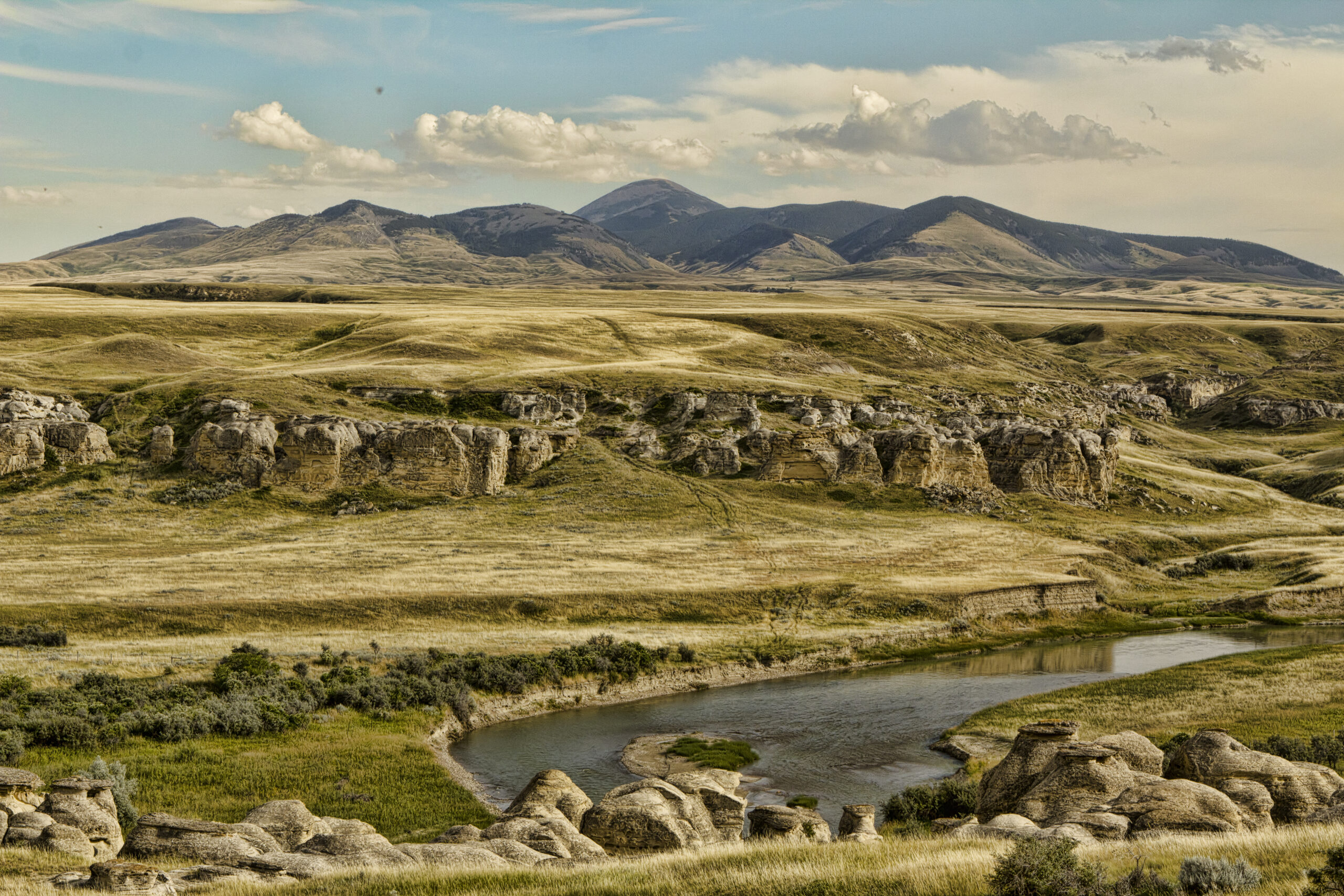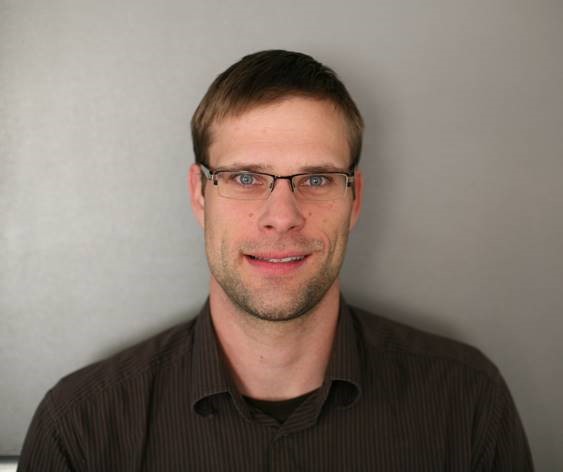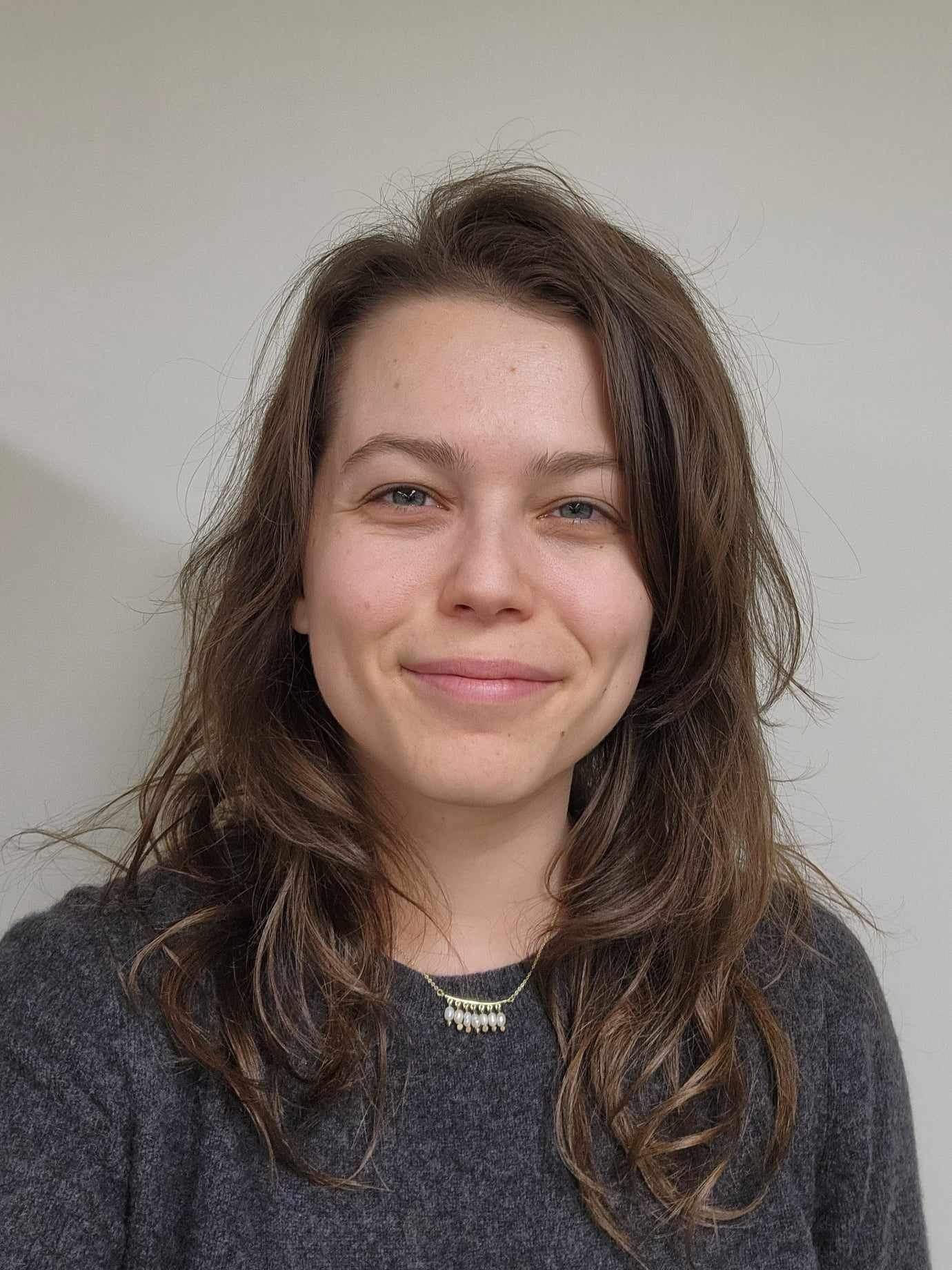The Future in Stone: Rock Art and Modern Messages at Áísínai’pi / Writing-on-Stone UNESCO World Heritage Site
The Blackfoot name for Writing-on-Stone in southern Alberta is Áísínai’pi (pronounced A SIN ay bee). Martin Heavy Head, an Elder with the Blackfoot Kainai Nation, says the direct translation – “it is written” – can be misleading. It implies a fixed document, like religious text. Áísínai’pi is a recently designated UNESCO World Heritage Site, located in southeastern Alberta next to the American border, that houses thousands of etched and ochre images composing the densest concentration of Indigenous rock art in Canada. Elder Heavy Head prefers perception of the Blackfoot place name as: “place where things are being written.” And what’s written in stone is far from fixed: Áísínai’pi is an archive that’s spiritually alive with ever-changing messages for all who visit.

Interpretive guide explaining rock art at Writing-on-Stone. Photo: Alberta Tourism.
In a joint bid for UNESCO World Heritage Site status, Kanai spiritual advisers explained that: “The rock art, the Sacred Beings, and our continuing traditions at Writing-on-Stone / Áísínai’pi give us a picture of our future.” That same desire to see what lies ahead has inspired at least 3,000 years of pilgrimages to a valley of knobbed hoodoo fields and imposing rock faces along the otherwise low and rolling hills of grass. Indigenous people here consulted an evolving array of symbols thought to be carved by birds or other spiritual messengers. Certain scenes foretold ambushes or locations of enemies that could encourage or dissuade war parties. While animal images revealed the locations of bison herds or stray horses, other scenes along this stretch of the Milk River reinforced ecological relationships and offered personal spiritual windows to tomorrow.
Archaeologists have documented 149 rock art sites with 247 panels (rock faces) displaying several thousand individual images. Almost 10% of Canada’s Indigenous rock art appears at Áísínai’pi along a 17 km ribbon of muddy water as it flows south into Montana and on to the Mississippi. Coated on the vertical sandstone slabs are petroglyphs chiseled with stone or bone tools and finger-drawn pictographs made from red ochre mixed with animal fat or blood.
The most common artistic elements are stylized humans, bison, elk, deer, loons, owls, dogs, and thunderbirds. Horses are particularly popular depictions in more recent rock art from a time when European domesticates changed prairie life. Some panels may advertise numbers of horses stolen or enemy killed as they relate to valour and exploits in battle.
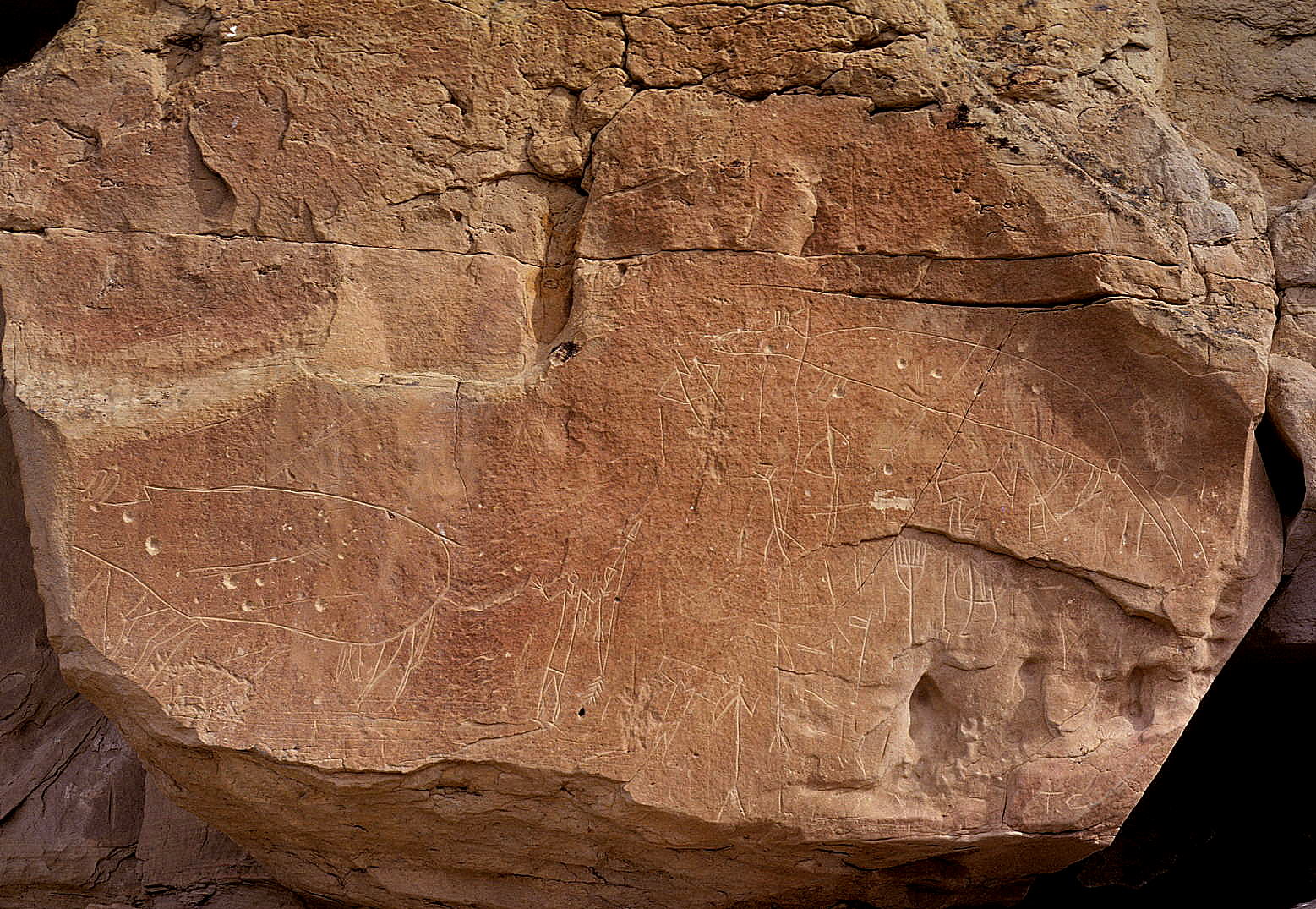
Writing-on-Stone art. Photo: John Kristensen
Why did people return for generations to this exact place? Elder Heavy Head’s most memorable experience at Áísínai’pi offers insight that archaeologists and visitors are beginning to appreciate.
Federal Government acts and treaties in the mid to late 1800s, he says, made it prohibitive for Indigenous groups to visit Áísínai’pi. An “Indian agent” could grant permission to leave reserve but approvals to visit sacred sites were seldom given. The place remained active in oral histories. In an effort to repatriate the landscape, Kainai Elders in the 2000s performed new ceremonies, one of which saw Elder Heavy Head in the midst of a cliffside tipi, commemorating a colleague. A sunbeam pierced the tipi when he reached out to place a feather on his friend’s head. At that moment a giant clap of thunder reverberated down the sandstone valley and gripped its audience in awe. The soft-spoken knowledge keeper retells the captivating story interwoven with song and emotion: it’s an experience that remains imbedded in Elder Heavy Head’s heart.
Áísínai’pi is a geological oddity of stone walls and enigmatic rock spires that create a unique spectrum of visual splendor and auditory eeriness. Called matapiiksi in the Blackfoot language, meaning ‘the people’, hoodoos are soft rock columns protected by harder shale or siltstone caps. The landforms funnel sound while playing with sunlight and shadows that snake across their curves. Above the sinuous hoodoo fields are domes of clay that dot the valley and are called spirit lodges: the ancestral tipis of cultural heroes in legends of the Niitsítapi (the collective name for the Blackfoot people). Below the hoodoos, at water’s edge, are stony canvases, thick layers of a particular sandstone that luckily cracks along huge, straight faults.
In this bizarre and beautiful landscape people heard the whistling voices of dead ancestors at spirit camps: the ghostly remnants of parties killed in battle. If voices called the names of visitors, it would mean certain death in days to come. Kainai believe the hoodoos are medicine rocks because their human and animal shapes housed spirits. Those spirits and others left messages on the walls. The sensory experience is echoed in Elder Heavy Head’s account of his own journey re-discovering Writing-on-Stone. “Hearing about that place is one thing,” he says, “but seeing and feeling it is another.”
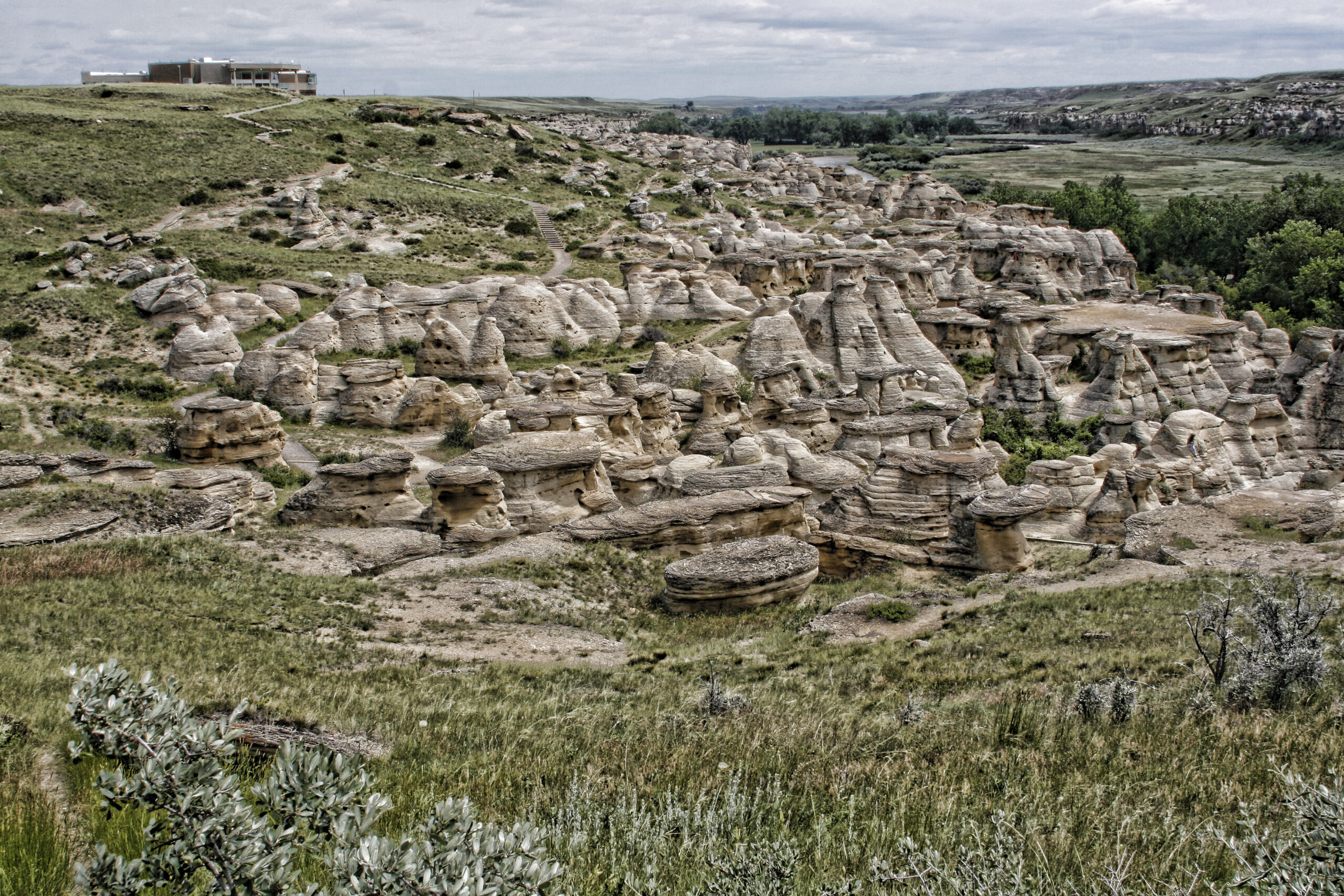
Interpretive Centre and hoodoos at Writing-on-Stone. Photo: Alberta Parks.
Despite decades of archaeological research and oral history of the area’s importance, very few campsites have been found surrounding the rock art panels. As told by Elders in the 1920s to Roland Willcomb (a US engineer by trade but poetic writer at heart), this is a mysterious place where ghosts live and people do not. Geography helps explain.

Archaeological excavations at Writing-on-Stone in 1977. Photo: Royal Alberta Museum
About 25 km south of Writing-on-Stone are the prominent Sweetgrass Hills of Montana. Rising in isolation on the grasslands like a vagrant runaway from the Rockies, the dominating hills are Katoyissiksi to the Blackfoot: resting place of a culture hero who freed the bison and made the world safe for people. For centuries, families visited the hills to gather wood and hunt bison during seasonal rounds. Áísínai’pi was a significant, if brief, stopping place en route from the sacred hills to wintering grounds near Alberta’s mountains. Archaeologists and early explorers, like palaeontologist George Sternberg in 1915, noted many burials in sandstone cavities that pock the park. The region was a physical and spiritual resting place of ancestors and supernatural beings. Like modern cemeteries and churches, Áísínai’pi is visited with respect but not lived in.
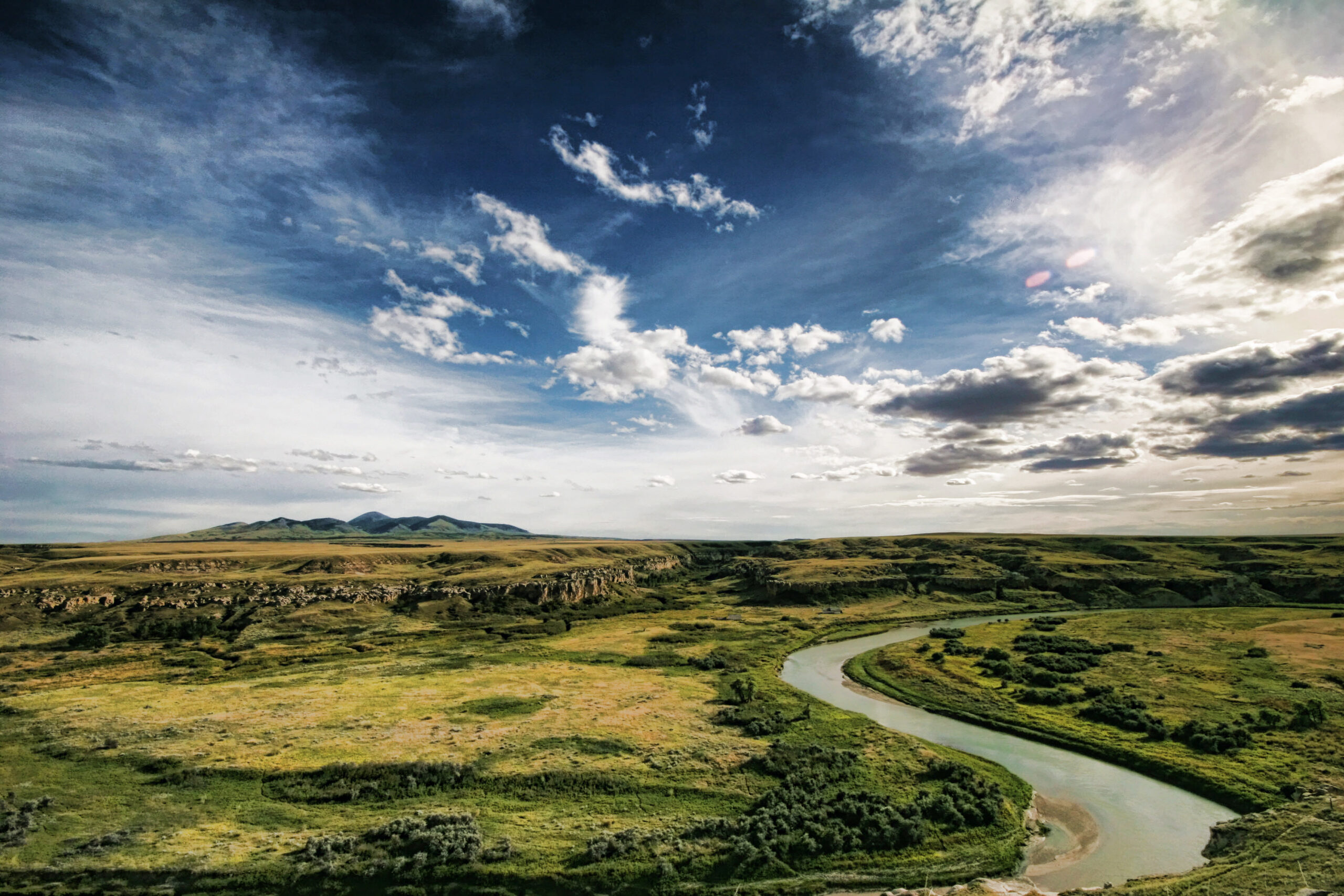
The Sweetgrass Hills of Montana overlooking Writing-on-Stone. Photo: Alberta Parks
The desire to continue hosting visitors spurred protection of the park and Niitsítapi support for UNESCO World Heritage designation, granted in 2019. For Elder Heavy Head, international status offered a stage “to realize that the Blackfoot have been here for thousands of years.” It’s a message he shares with elementary to university students among his community. Blackfoot interpreters continue to tell that story to modern visitors, who average over 50,000 people a year.
Aaron Domes and the late Jack Brink were two key participants in the nomination process, working of behalf of Alberta Parks and the Royal Alberta Museum. Brink worked as an archaeologist in Writing-on-Stone / Áísínai’pi for over 40 years and extolled the area’s archaeological value as a portal into ancient minds that very few sites can provide.
With a down-to-earth wisdom, Brink said that the park’s pictographs and petroglyphs depict fears, desires, and the spiritual lens through which people saw the world. Brink’s numerous publications explain how rock art represents spiritual messages for introspection during personal vision quests or interpretation to the masses by shamans. Other art may be tallies of war deeds or hunting targets whose ceremonial capture would translate into real life success. The latter idea is strengthened by broken arrow heads and bullet casings that Brink found buried in the soil below the images. A subset of art at Áísínai’pi is abstract communication with imbedded instructions: a set of prototypical “words” (geometric and abstract symbols) that could have developed in time to a written language. When placed in a bigger geography, all these dimensions of rock art help modern people appreciate the power of cultural landscapes, which proved to be a cornerstone of UNESCO recognition.
Just as Elder Heavy Head stresses feeling the land, Aaron Domes stresses the importance of bonding with ecology, geology, and culture at Writing-on-Stone. He speaks with blended insight as a scholar of heritage management and an outdoor enthusiast who cherishes campfire solitude in hidden coulees. Domes thinks that “Anyone can relate to that theme of a cultural landscape. There’s a real purpose and value to connecting to the land… you can come here and feel remote and reflect on your experiences.” Visitors can hike a network of designated valley trails, camp on the flats in the shelter of cottonwoods, swim in the cool Milk River, and take tours of rock art led by Blackfoot interpretive guides. Domes strove for a balance between preservation of the park, facilitating tourist relationships to the land, and ensuring Indigenous revival of old rituals into new ceremonies: “It’s a way of keeping the site alive.”
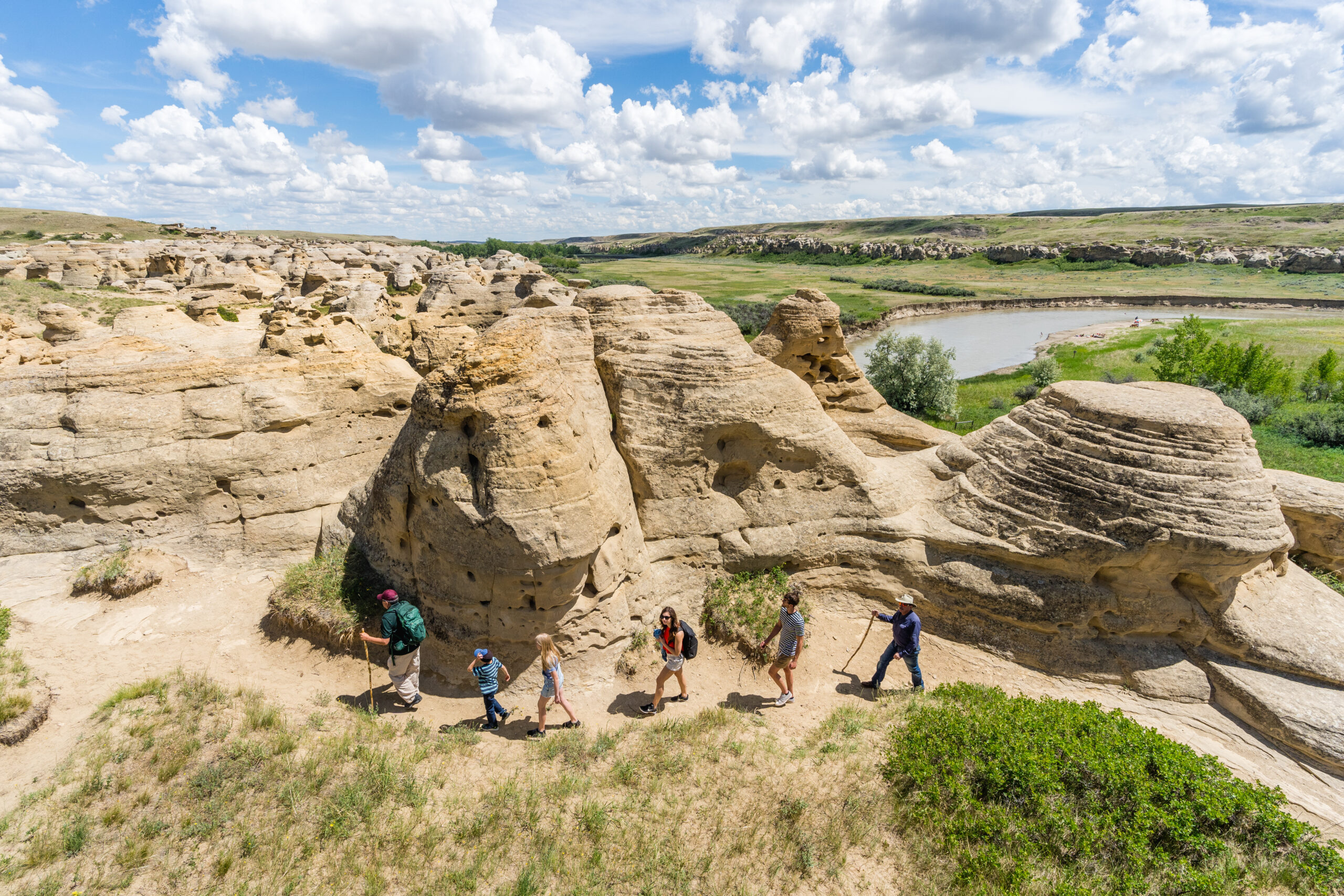
Photo: Alberta Tourism
Many monuments to human heritage protect a fixed event at a place built by people. Ecological preserves, like many national parks, are built by nature. But to Jack Brink, Writing-on-Stone / Áísínai’pi bridges those two definitions. Elder Heavy Head, Aaron Domes, and Jack Brink were instrumental in collaboratively pushing for its UNESCO designation. Staying true to Áísínai’pi (where ‘it is being written’), the park will forever be a changing cultural landscape in present tense. Kainai Elder, parks manager, and respected archaeologist all agree that the core values of Writing-on-Stone / Áísínai’pi are the stories it tells of Blackfoot connection to a sacred landscape and the opportunity for people around the world to establish their own connection. Elder Heavy Head encourages visitors to feel this place and let it shape their future.
Cover photo is a courtesy of Alberta Parks

